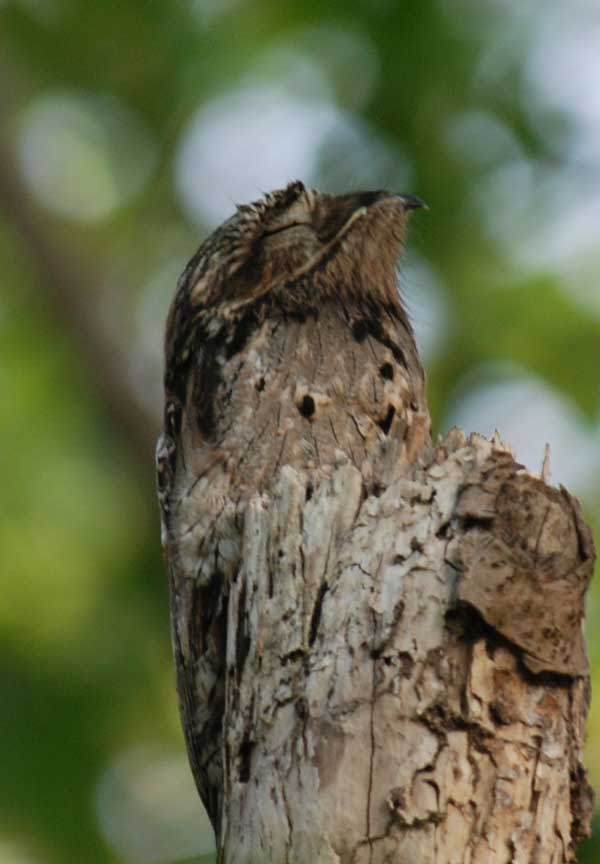Nyctibius griseus (*) Cladus: Eukaryota Name Nyctibius griseus (Gmelin, 1789) Reference Systema Naturae 1 pt2 p.1029 Vernacular names
The Common Potoo, Grey Potoo or Lesser Potoo (Nyctibius griseus), is a nocturnal bird which breeds in tropical Central and South America from Costa Rica to northern Argentina and northern Uruguay. The Northern Potoo (N. jamaicensis) was formerly classified as a subspecies of this species. This potoo is a large cypselomorph bird related to the nightjars and frogmouths, but like other potoos it lacks the bristles around the mouth found in the true nightjars. It is 33-38cm long and pale greyish to brown, finely patterned with black and buff, camouflaged to look like a log; this is a safety measure to help protect it from predators, but its mode of perch is also a camouflage. It has large orange eyes. The Common Potoo can be located at night by the reflection of light from its eyes as it sits on a post, or by its haunting melancholic song, a BO-OU, BO-ou, bo-ou, bo-ou, bo-ou, bo-ou, bo-ou, bo-ou dropping in both pitch and volume. It is a resident breeder in open woodlands and savannah. It avoids cooler montane regions, rarely occurring over 1,900 meters ASL even in the hottest parts of its range. Also, arid regions are usually avoided; for example in the dry Caribbean plain of Colombia the species was first recorded in April 1999. In gallery forest-type environment around the Uruguayan-Brazilian border, it is by no means uncommon. A bit further south, where the amount of wood- versus grassland is somewhat lower, it is decidedly rare, and due west, in the Entre Ríos Province of Argentina with its abundant riparian forest it is likewise not common. The birds at the southern end of their range may migrate short distances northwards in winter.[1]. This nocturnal insectivore hunts from a perch like a shrike or flycatcher[disambiguation needed]. During the day it perches upright on a tree stump, and is completely invisible, looking like part of the stump because it stays so completely still as it perches. If disturbed by larger animals, such as Common Marmosets (Callithrix jacchus), it may break its camouflage and try to chase them away however[2]. The single egg is white with lilac spots . It laid directly in a depression in a tree limb[3], usually some meters above ground. It is not clear whether there can be, on occasion, two eggs in a clutch.[4] This widespread species is not considered threatened by the IUCN.[5] Footnotes 1. ^ Cuervo et al. (2003), Strewe & Navarro (2004), Azpiroz & Menéndez (2008)
* Azpiroz, Adrián B. & Menéndez, José L. (2008): Three new species and novel distributional data for birds in Uruguay. Bull. B.O.C. 128(1): 38-56.
Source: Wikipedia, Wikispecies: All text is available under the terms of the GNU Free Documentation License |
|

